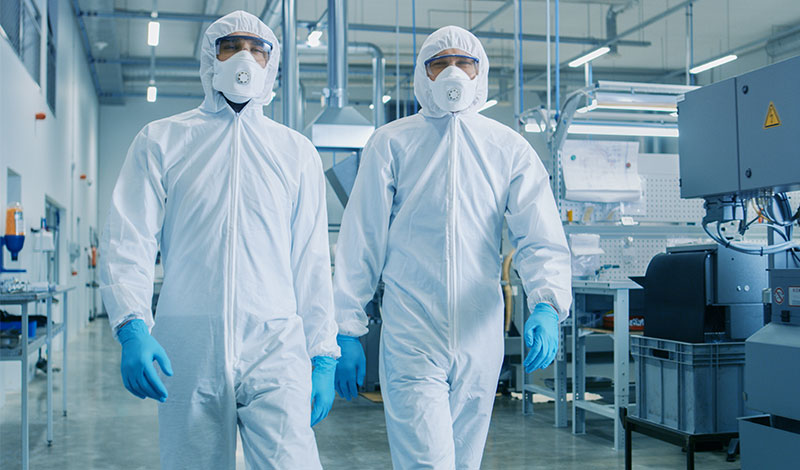
Posted on
The goal of any thin film deposition method is to create a high-quality uniform film across the entire surface of a substrate. Unfortunately, defects such as spits, particles, and voids can interfere with your ability to reach desired film quality. If necessary, there are ways to adjust a manufacturing process to eliminate such defects and improve yield. This allows manufacturers to adopt a more efficient process for better performance over time.
In this article, we discuss spits, particles, and voids; how they impact production; and ways to prevent them.
Spits
In the evaporation deposition method, the goal is to smoothly and consistently evaporate a source material onto the substrate to create a high-quality coating. Spits, where larger particles of the target material are ejected from the source and become embedded in the film coating, can cause problems for the next manufacturing step. This is found primarily in thermal and e-beam evaporation.
Spits negatively affect both production efficiency and application performance. This can have a notable effect on a manufacturer’s return on investment, largely due to waste. Consider indium bump deposition, in which bump deposition is one of the last steps in the process, so spit defects, which are often larger than the indium bumps, might require scrapping nearly complete components. When considering cost of ownership, scrapping components when they have the most value is the worst place to have a yield issue.
It is possible to reduce spits during evaporation by lowering the deposition rate, but there is a tradeoff: To meet production demand while slowing the deposition rate requires investing in more capital equipment, driving up total cost of production. Alternatively, avoiding spits is possible with the right system configuration. Denton’s indium bump system, for example, is designed to prevent spitting at high deposition rates, maximizing yield and productivity.
Particles
In thin film deposition, particles – extra materials from the environment – can disrupt the uniformity of a layer, and in turn, the reliability and performance of its application. Particles may be found in the environment – such as flakes, dust, human hair and skin – or from previous steps during production. When an application requires multiple layers to be applied to a substrate, the opportunities for particle introduction increase.
Any surface particles on the substrate or embedded during deposition will degrade device performance or make the product unusable. This is why applications such as laser and semiconductor manufacturing require clean rooms to prevent environmental contamination.
To prevent or remove particles in thin film coatings and applications, the solution varies depending on your process. Your main tools in preventing particles are proper shield design, frequency of cleaning, and shield replacement. Shields that are closer to the deposition zone may need changing or cleaning more frequently. Preventive maintenance is an important factor in reducing particle contamination. A solid understanding of the process is key here. The system needs to be designed well and maintained according to the needs of your process.
Voids
In thin film deposition, voids (also known as vacancies) are structural defects, such as pores, where the material is missing from the film. Void formation can be affected by a number of issues, including variations in temperature and the kinetic energy of the deposition method. While voids can occur due to phase transformation regardless of deposition method used, voids occur more frequently in evaporation than in ion beam sputtering.
To manage void development in thin film deposition, the ability to control temperature is essential. Increasing the temperature of a process can reduce the number of voids, but there is a tradeoff between void reduction and substrate damage: High temperatures can damage a substrate and existing layers.
Ion Assisted Deposition (IAD) is one solution for preventing voids. IAD is a variation of standard e-beam technology that adds a low-energy ion beam directed at the substrate without subjecting the substrate to heat stress. The ions released by this beam will densify the film. The higher-density coating results in better environmental stability, better mechanical durability, and no voids.
Denton Vacuum has extensive experience optimizing system design. Our application-specific approach means we work with you to achieve a spit-free configuration with no need to lower your deposition rate. This helps meet production needs and gain tighter process control. Contact us to learn about solutions for your application.